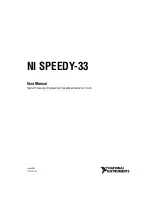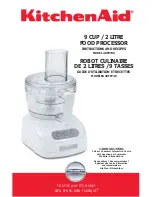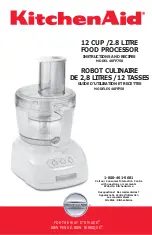
14-24
DSP56305 User’s Manual
MOTOROLA
CYCLIC CODE CO-PROCESSOR
Programming Considerations
terminated immediately upon starting - if a zero is detected at once, no shift will be
performed during that run phase.
14.6.3
Output Phase
The output phase is enabled only in the Cipher modes (OPM1 = 0). The output phase is
entered immediately after the run phase completes, if the Output Counter is non-zero.
When in the output phase data input is disabled and the CFSRs are shifted without any
new data being input. Every shift causes the Output Counter to be decremented. During
the output phase the stepping function is enabled, i.e. CFSRs can be selectively disabled
from shifting according to the contents of the Step Function Table. The output data bits
(and thus the feedforward tap path and the Bitwise Majority function of the CFSRs) are
enabled in the output phase. The output data bit that goes to the data FIFO register
(CDFR) is generated by XORing all enabled output bits coming from the CFSRs
(according to OUTE[3:0] bits in CSFTB). The output phase terminates when the Output
Counter reaches zero.
In the output phase, the output data bit is generated by first executing a shift in the
enabled CFSRs and then calculating the bit’s value according to the feedforward tap
path and the Associated Bitwise Majority function. This procedure is suitable for some
ciphering algorithms such as the GSM A5/1. Other algorithms (e.g. GSM A5/2), which
require the output data bit to be first calculated and then the CFSRs shifted, can be
implemented by executing one shift fewer during the run phase than specified in the
algorithm (i.e. the programmer should write (#Value – 1) to the Run Counter where
#Value is the number of shifts specified by the ciphering algorithm for the run phase).
Processing is done when the input, run, and (when enabled) output phases have
completed processing.
14.6.4
Cipher Mode Processing
Cipher mode supports implementation of algorithms for data ciphering and
de-ciphering. Cipher processing is enabled when the CCOP is programmed to operate in
one of the Cipher modes (i.e., if OPM1 = 0). The processing flow is identical in both
Cipher modes.
The only difference between the two is that Step-by-step mode (OPM[1:0] = 01) clears
PREN and returns to the Idle state after executing one shift. Every shift must then be
explicitly activated (by re-setting PREN). Step-by-step mode thus allows the
programmer more intervention during Cipher processing than Normal mode.
Summary of Contents for DSP56305
Page 34: ...xxxii DSP56305 User s Manual MOTOROLA ...
Page 40: ...xxxvi DSP56305 User s Manual MOTOROLA ...
Page 41: ...MOTOROLA DSP56305 User s Manual 1 1 SECTION 1 DSP56305 OVERVIEW ...
Page 58: ...1 18 DSP56305 User s Manual MOTOROLA DSP56305 Overview DSP56305 Architecture Overview ...
Page 59: ...MOTOROLA DSP56305 User s Manual 2 1 SECTION 2 SIGNAL CONNECTION DESCRIPTIONS ...
Page 98: ...2 40 DSP56305 User s Manual MOTOROLA Signal Connection Descriptions JTAG OnCE Interface ...
Page 99: ...MOTOROLA DSP56305 User s Manual 3 1 SECTION 3 MEMORY CONFIGURATION ...
Page 119: ...MOTOROLA DSP56305 User s Manual 4 1 SECTION 4 CORE CONFIGURATION ...
Page 144: ...4 26 DSP56305 User s Manual MOTOROLA Core Configuration JTAG Boundary Scan Register BSR ...
Page 145: ...MOTOROLA DSP56305 User s Manual 5 1 SECTION 5 GENERAL PURPOSE I O ...
Page 149: ...HOST INTERFACE HI32 MOTOROLA DSP56305 User s Manual 6 1 SECTION 6 HOST INTERFACE HI32 ...
Page 150: ...6 2 DSP56305 User s Manual MOTOROLA HOST INTERFACE HI32 ...
Page 259: ...MOTOROLA DSP56305 User s Manual 7 1 SECTION 7 ENHANCED SYNCHRONOUS SERIAL INTERFACE ESSI ...
Page 315: ...MOTOROLA DSP56305 User s Manual 8 1 SECTION 8 SERIAL COMMUNICATION INTERFACE SCI ...
Page 347: ...MOTOROLA DSP56305 User s Manual 9 1 SECTION 9 TIMER EVENT COUNTER ...
Page 376: ...9 30 DSP56305 User s Manual MOTOROLA Timer Event Counter Timer Modes of Operation ...
Page 377: ...MOTOROLA DSP56305 User s Manual 10 1 SECTION 10 ON CHIP EMULATION MODULE ...
Page 411: ...MOTOROLA DSP56305 User s Manual 11 1 SECTION 11 JTAG PORT ...
Page 430: ...11 20 DSP56305 User s Manual MOTOROLA JTAG Port DSP56305 Boundary Scan Register ...
Page 431: ...Filter Co Processor MOTOROLA DSP56305 User s Manual 12 1 SECTION 12 FILTER CO PROCESSOR ...
Page 471: ...VITERBI CO PROCESSOR MOTOROLA DSP56305 User s Manual 13 1 SECTION 13 VITERBI CO PROCESSOR ...
Page 522: ...13 52 DSP56305 User s Manual MOTOROLA VITERBI CO PROCESSOR References ...
Page 554: ...14 32 DSP56305 User s Manual MOTOROLA CYCLIC CODE CO PROCESSOR Configuration Examples ...
Page 555: ...MOTOROLA DSP56305 User s Manual A 1 APPENDIX A BOOTSTRAP CODE ...
Page 568: ...A 14 DSP56305 User s Manual MOTOROLA Bootstrap Code ...
Page 569: ...Equates MOTOROLA DSP56305 User s Manual B 1 APPENDIX B EQUATES ...
Page 589: ...MOTOROLA DSP56305 User s Manual C 1 APPENDIX C JTAG BSDL ...
Page 590: ...C 2 DSP56305 User s Manual MOTOROLA JTAG BSDL ...
Page 600: ...C 12 DSP56305 User s Manual MOTOROLA JTAG BSDL ...
Page 601: ...MOTOROLA DSP56305 User s Manual D 1 APPENDIX D PROGRAMMING REFERENCE ...
Page 602: ...D 2 DSP56305 User s Manual MOTOROLA PROGRAMMING REFERENCE ...
Page 661: ...Y MOTOROLA DSP56305 User s Manual Index 11 ...
Page 662: ...Y Index 12 DSP56305 User s Manual MOTOROLA ...
















































